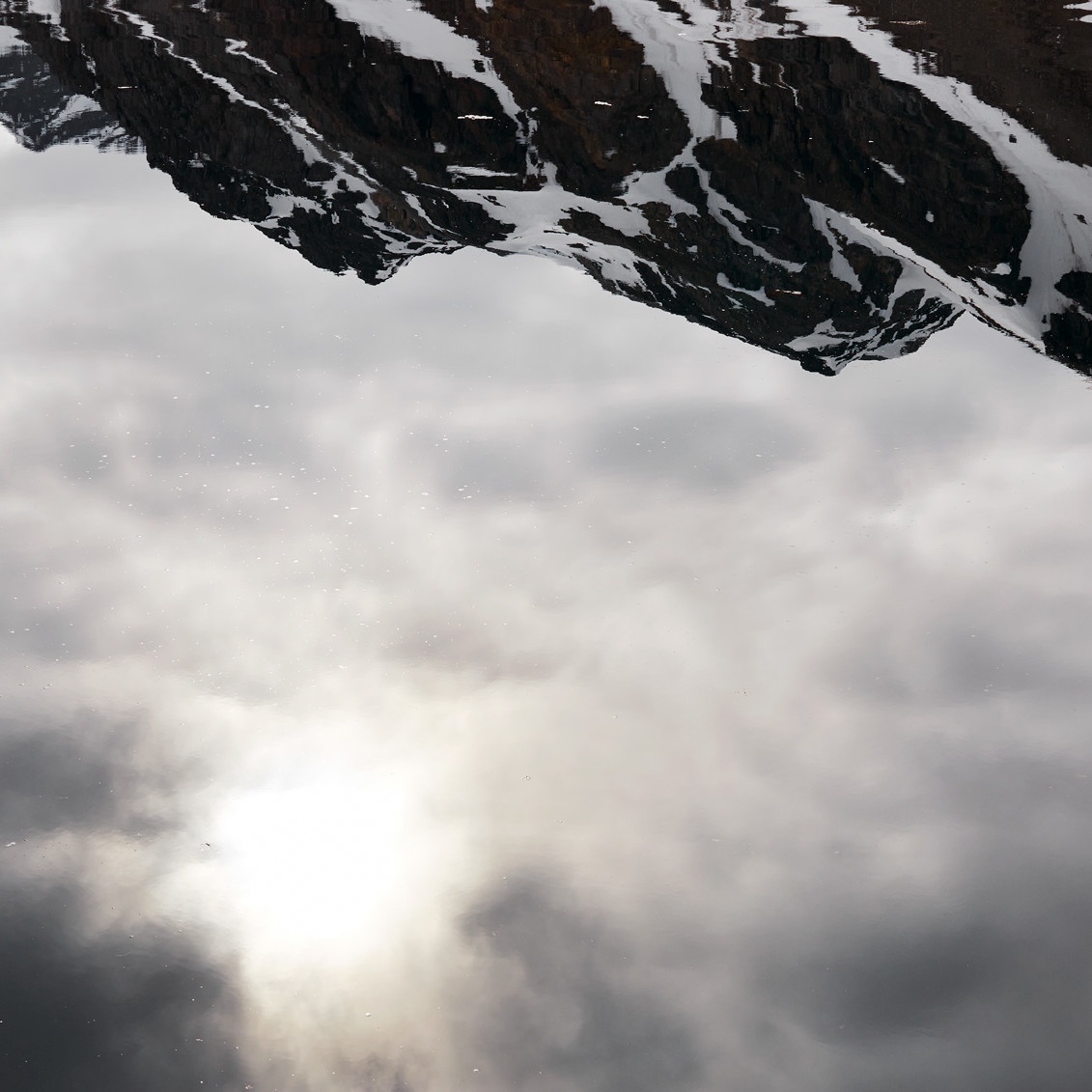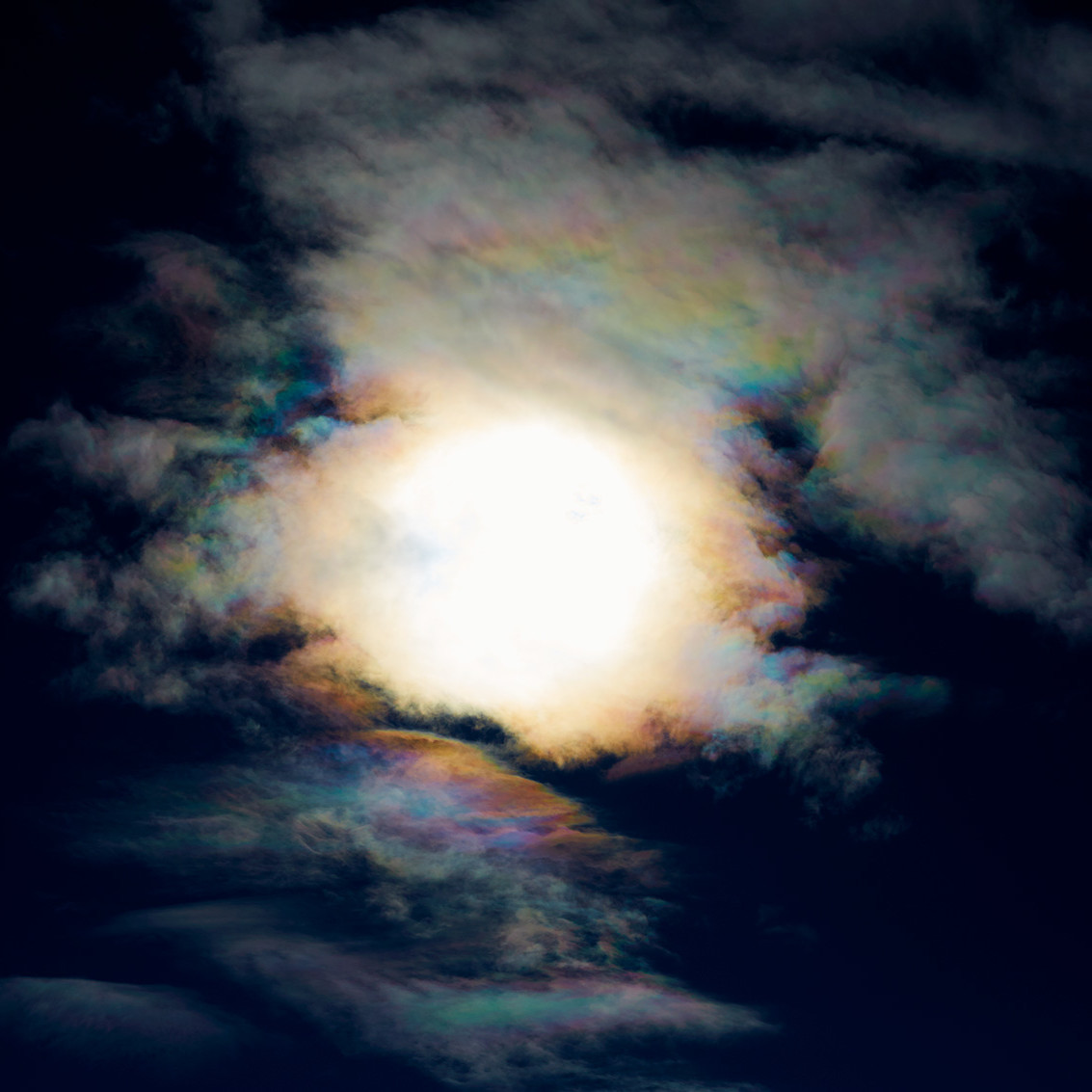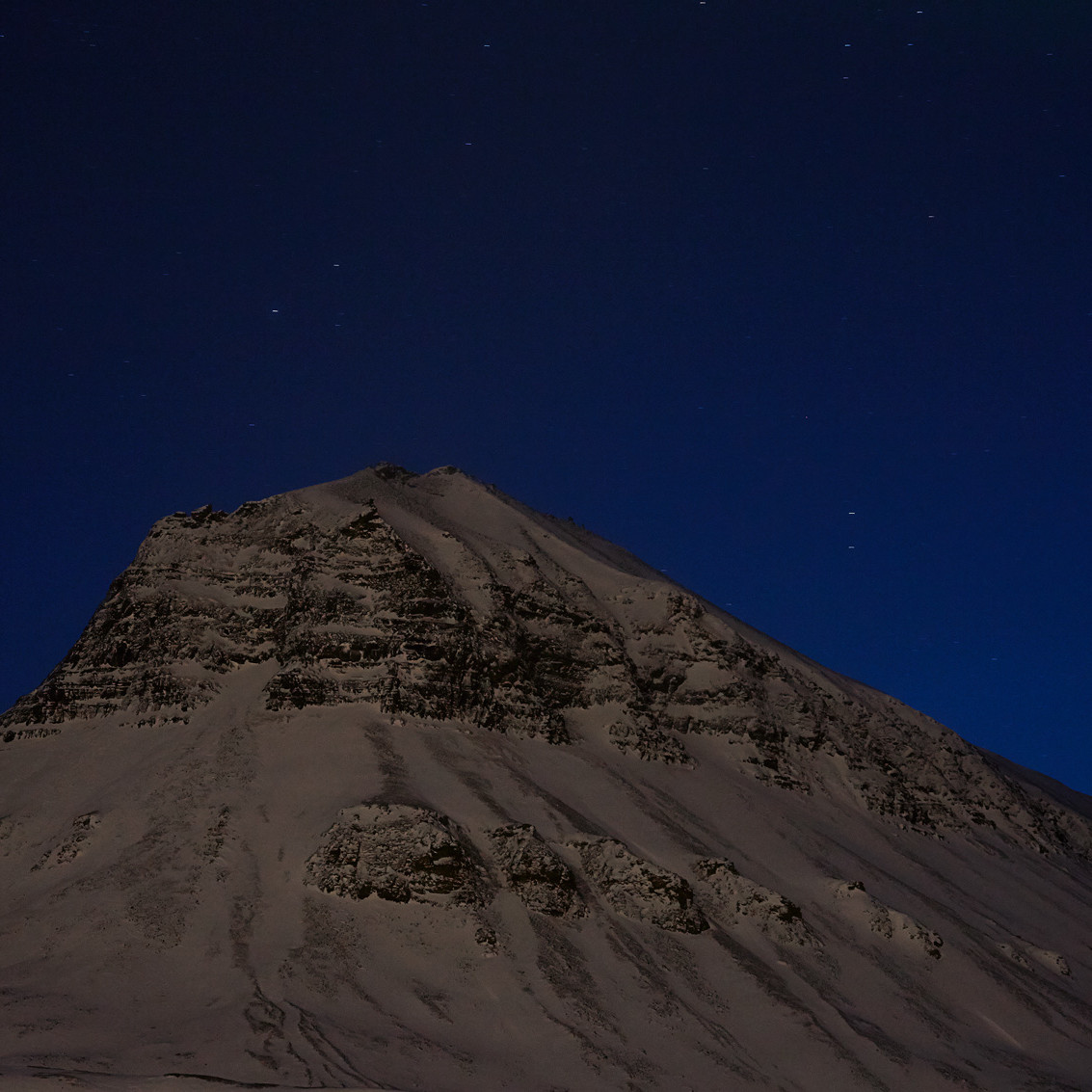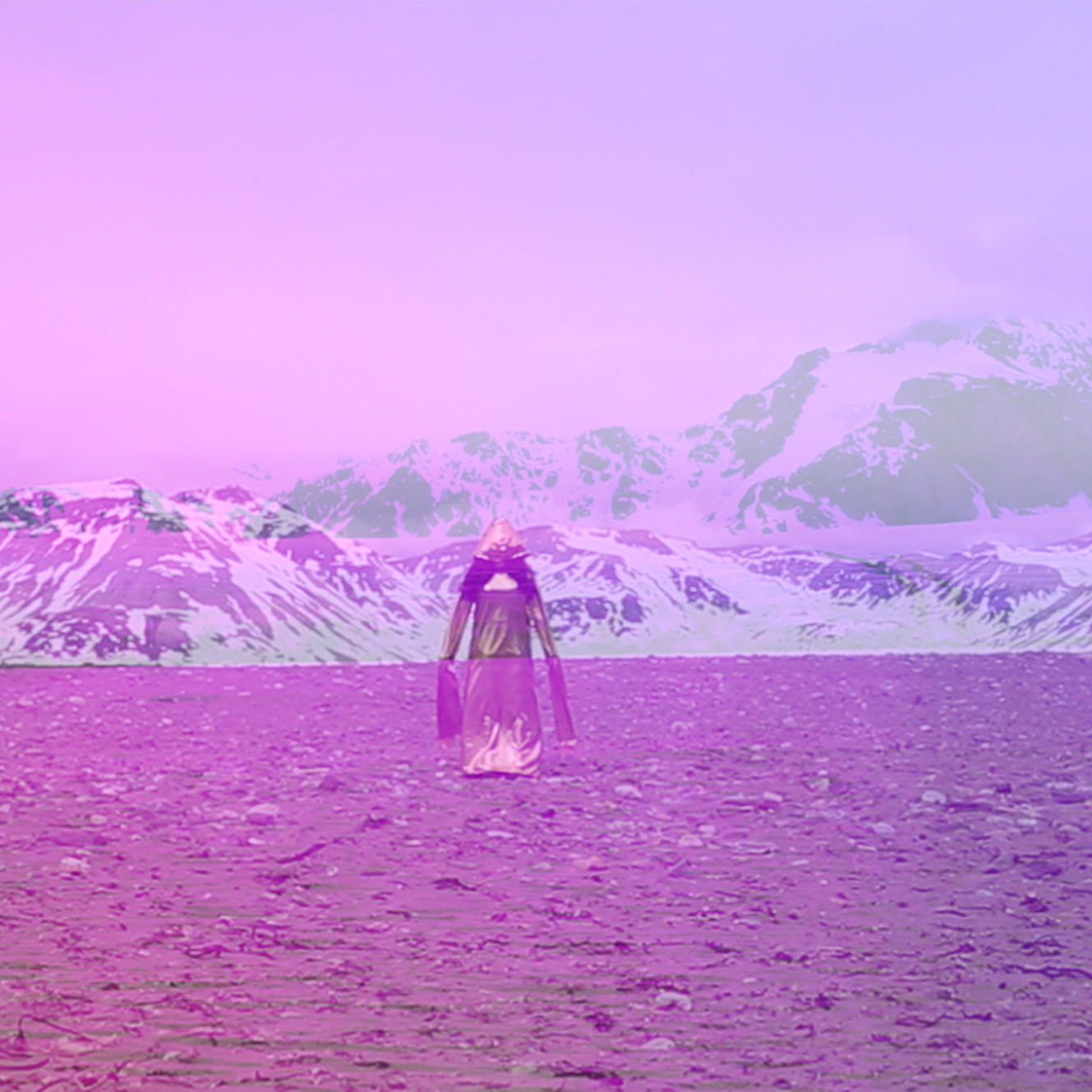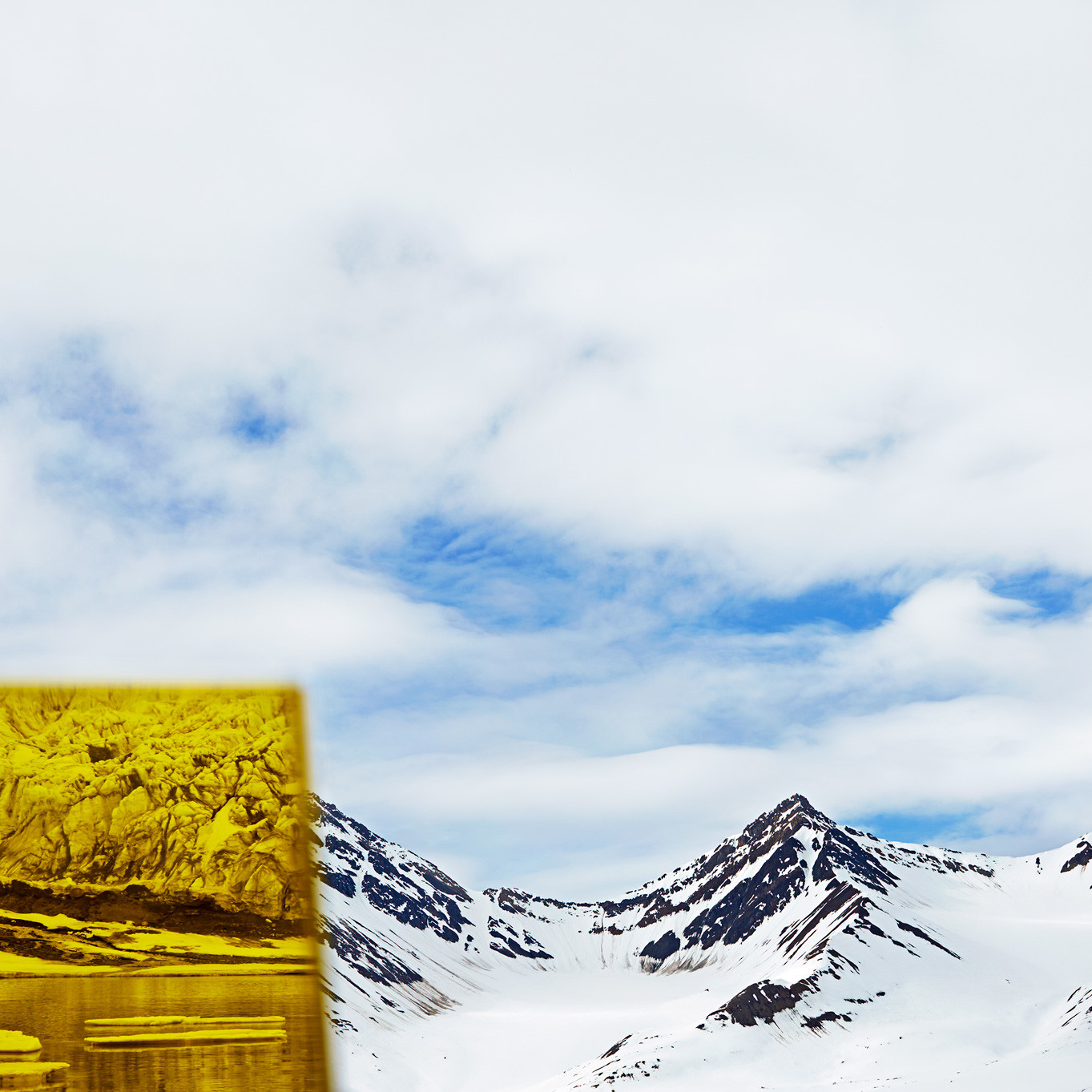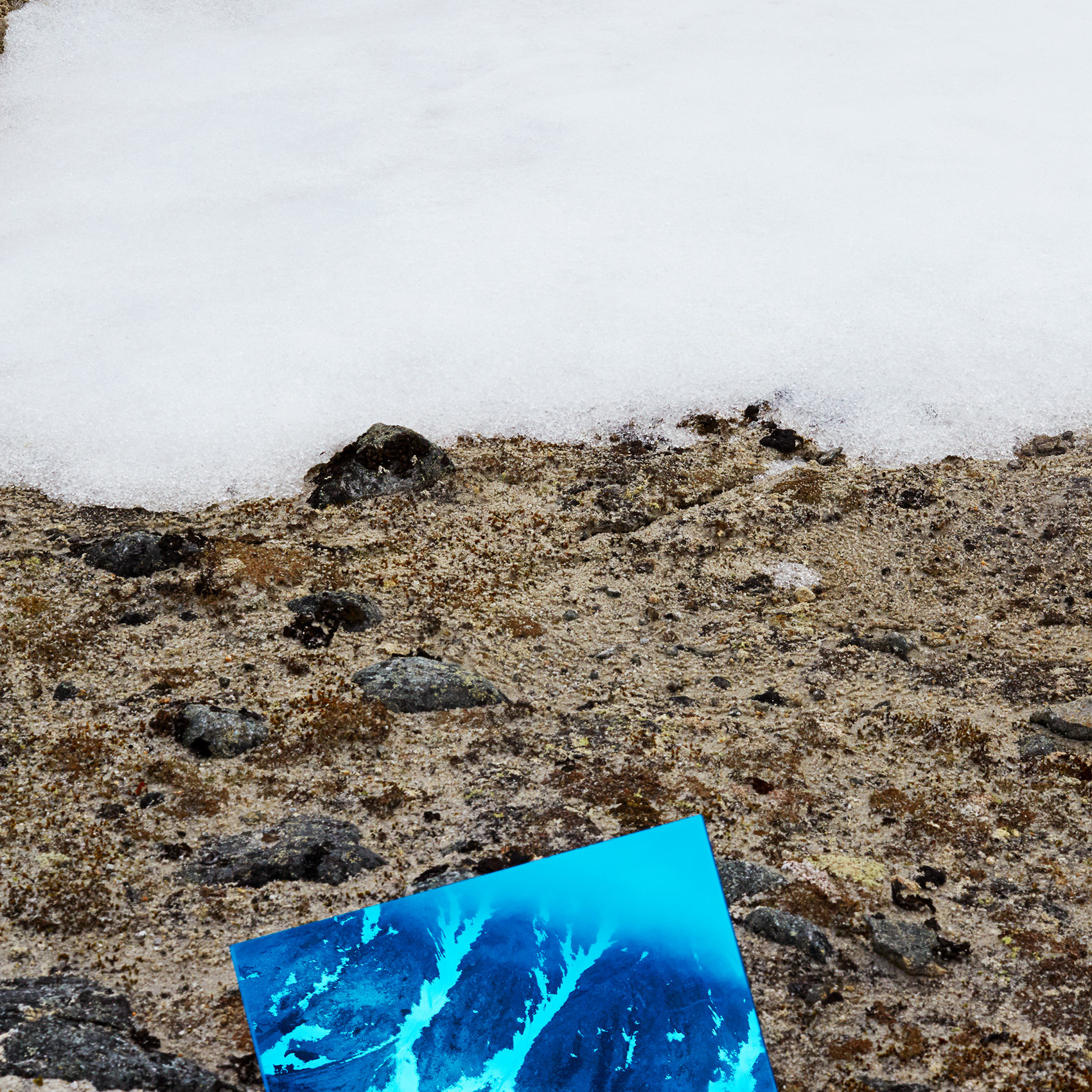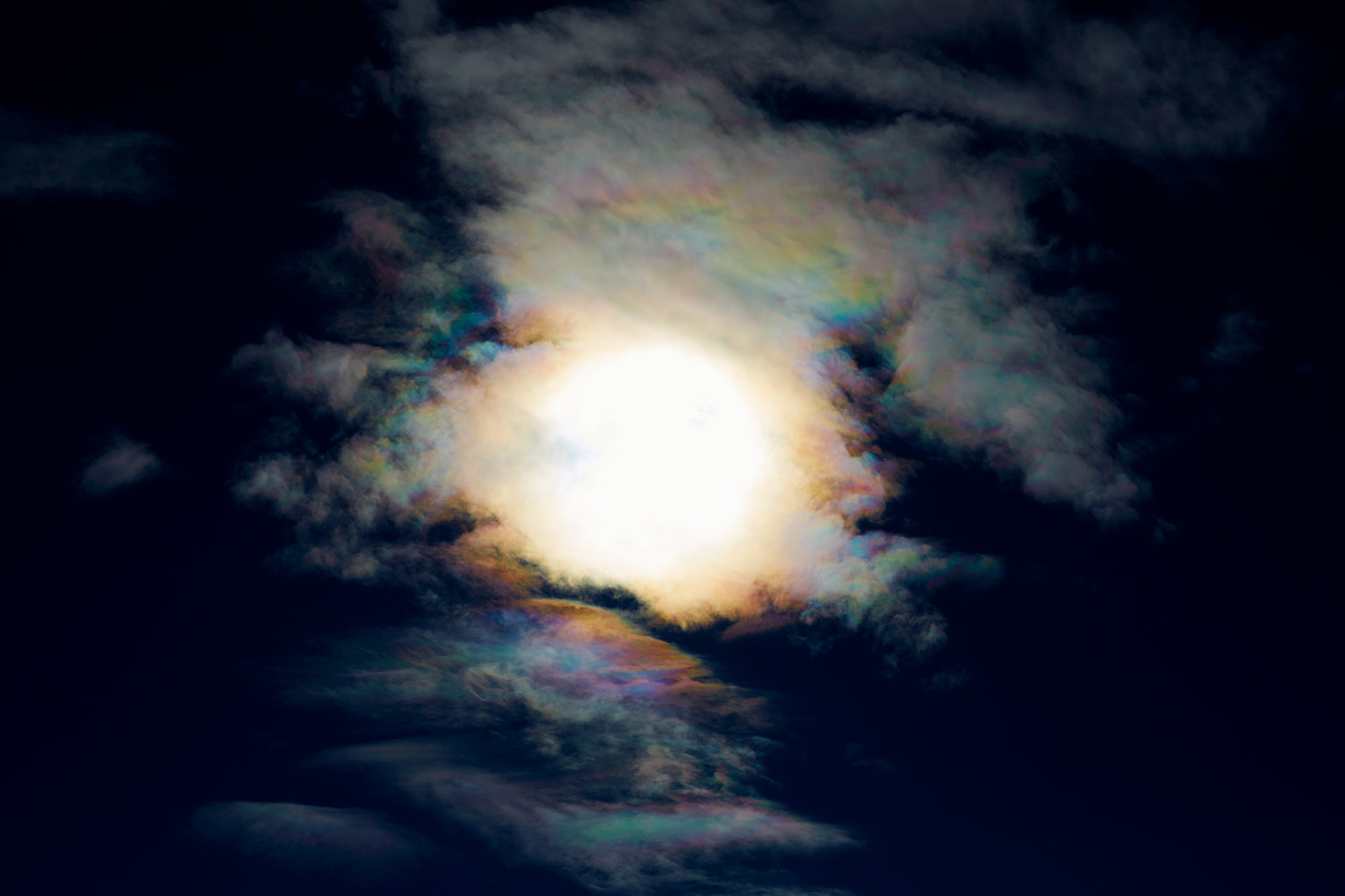
Bahar Yurukoglu, Diamond Dust, 2015, pigment print [courtesy of the artist]
Flow Through: Bahar Yürükoğlu
Share:
What drew you to Svalbard, and how did you feel once you were there?
I traveled to Svalbard twice in 2015, first in June during the midnight sun, and again in December during the polar night. I’m attracted to extreme landscapes in my work. This has taken me to Iceland, Wyoming, Svalbard, and soon Antarctica. At first, it wasn’t Svalbard itself that drew me, but the opportunity to make work in the landscape of the high Arctic. Before my first visit, I began researching and learning about Svalbard, and my curiosity and interest escalated, but I didn’t really know what to expect. The extremes in light, climate, geology, and politics made it too abstract a concept of place to understand from far away. So I approached Svalbard as an uncategorizable geography—as a timeless, borderless place. I went there with concepts for work but no idea of what it would feel like as a space and if these concepts would change when I got there.
Both visits confirmed these notions of the undefinable, of isolation, and of containment that I set out there with. Once I was there and spent time in the landscape, I realized a much more complex relationship between myself and time, space, and light. The scale of the landscape is immense, and the extremes in lightness and darkness made me unusually aware of my sense of sight and sound, not to mention my sense of time, which slipped away. During both visits, I always had a feeling of waiting for something to happen—most likely for the sun to set in June, or for the sun to rise in December.
Bahar Yürükoğlu, Hedes, 2015, pigment print [courtesy of the artist]
Heavy hearts, like heavy clouds in the sky, are best relieved by the letting of a little water.
-Bahar
How would you say your work reflects your own personal relationship with Svalbard in general, both as a site and situation?
I wanted to utilize the landscape of Svalbard as a stage on which to explore ideas of extinction, mortality, survival, loneliness, and displacement: things that all people encounter at one point in their lives. I consider Svalbard to be a future perfect world, isolated and frozen, preserved in a solitary state of existence from the rest of the planet. This doesn’t diminish the effects of global warming on the sensitive environment, but it is a place concealed from the current global crises of war and destruction. It is also a place that reminds us that nature will eventually win, in one way or another. Pyramiden is a good example of a place where humans came and built to show dominance but eventually left, and what remains is a haunting relic of communism. Birds now live in what were once the homes of coal mine workers and buildings are crumbling around statues of Lenin.
Svalbard has a feeling of another world in many ways, and because it is an international territory, there is a sense of freedom that is strange when we are so used to being defined by borders. The landscape and politics of Svalbard was disorienting without any intervention on my part. The work I made in Flow Through attempts to translate the politics of the space to an audience far removed. I approached this in a few ways: in the photographs I juxtapose nature and artificiality through the use of filters and reflections to give a sense of displacement. I also photographed natural “phenomena” like halos around the midnight sun or reflections on the dark waters of the Arctic Ocean. Juxtaposed, these images give a sense of that disorienting relationship to time and space, and question whether what we are seeing is real or an illusion, something I questioned often while I was there.
My video The Navigator deals with all the situations presented by Svalbard as a political space. The female figure in gold walking through the landscape represents a postapocalyptic fantasy I have deep inside of me. She is communicating as a form of survival and immortality; at once to be saved, and also to not be forgotten. She could also be seen as existing between various states: natural and industrialized, the utopian and dystopian, future and past. As a flâneuse, the figure in gold is nomadic and transient through time and space, partaking in a transference of information through an interaction with her surroundings, revealed through her ritualistic gestures and mark-making. The Navigator is in essence devising a new mythology, as she travels through a frozen, borderless, timeless space.
Gallery
Born 1981 in Washington, DC, Bahar Yürükoğlu lives and works in Istanbul, Turkey. Using photography, video, sound, and installation, Yürükoğlu’s practice investigates the process of translation between the two-dimensional plane and three-dimensional space. In her photographic practice, she seeks to redefine the landscape photograph by staging temporary interventions in natural environments. She earned her MFA in 2011 from the Massachusetts College of Art and Design, Boston, and her BFA in 2003 from the School of Visual Arts, New York. She has had solo shows in Turkey and the United States, and has been artist in residence at Brush Creek Foundation for the Arts (2013) and the Arctic Circle (2015), and in 2017 will join the Clipperton Project in Antarctica.

